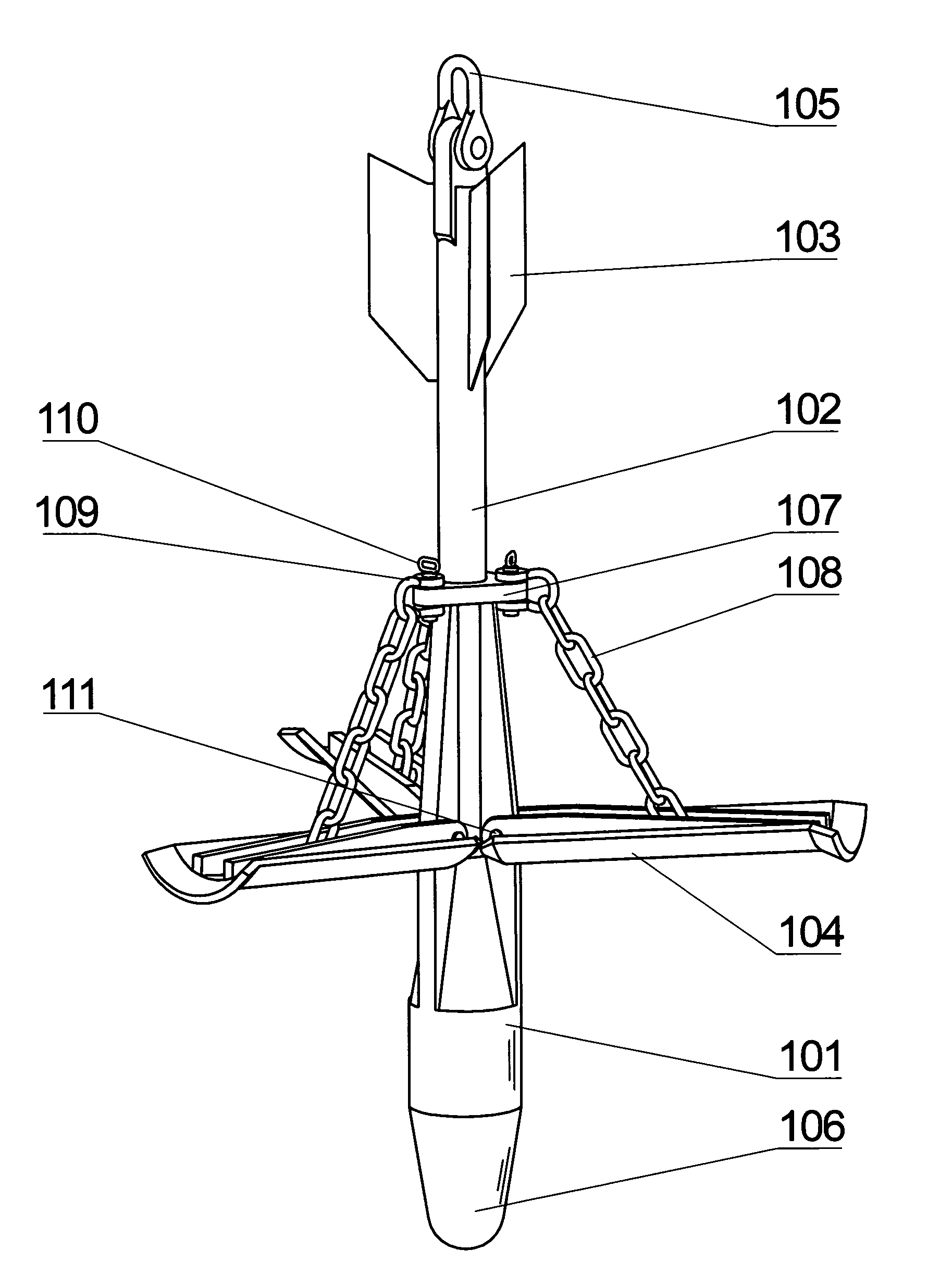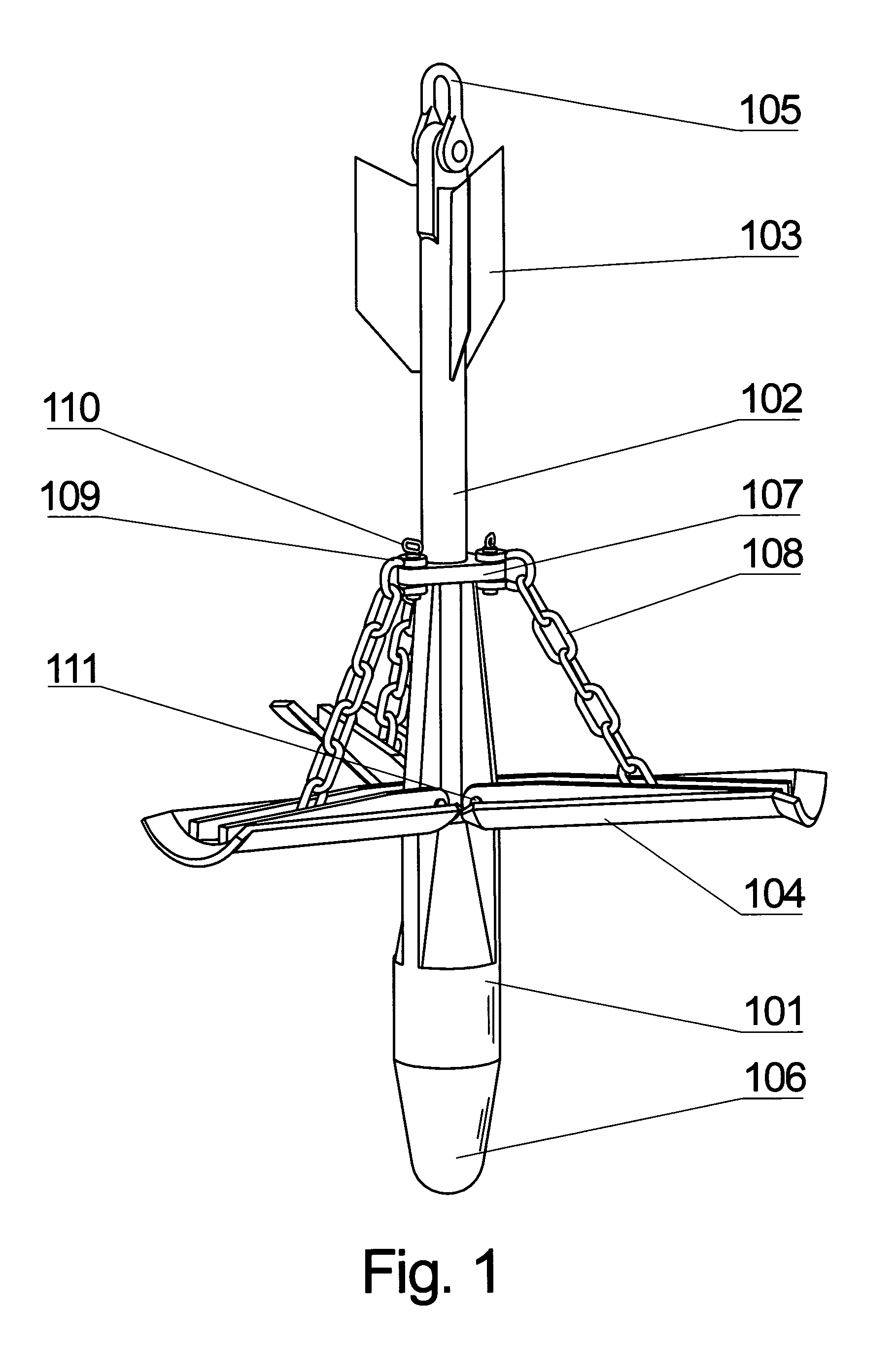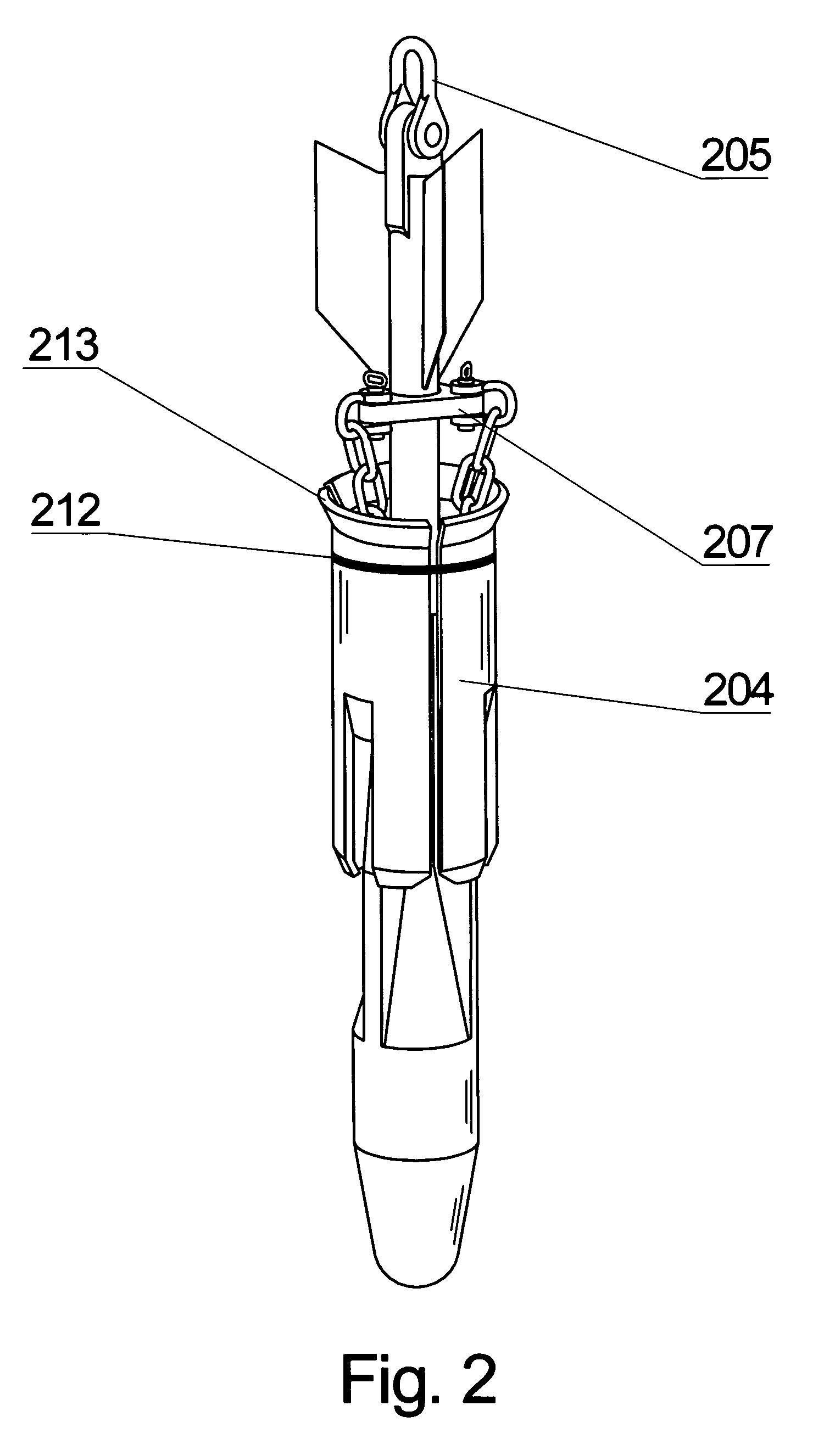Folding torpedo anchor for marine moorings
a torpedo anchor and folding technology, applied in the direction of anchors, waterborne vessels, vessel construction, etc., can solve the problem that none of these technologies is currently in commercial use in the offshore industry
- Summary
- Abstract
- Description
- Claims
- Application Information
AI Technical Summary
Benefits of technology
Problems solved by technology
Method used
Image
Examples
Embodiment Construction
[0028]The main embodiment of the present invention effectively combines features of a torpedo anchor with features of a plate anchor, the combination of which is unknown in the prior art. The anchor is installed by means of free fall and subsequent penetration into the seafloor following impact. Once embedded in the seafloor, a pulling force exerted on the anchor line will deploy the anchor flukes from their longitudinal launch position into an extended holding position. With the flukes deployed in a holding position, the anchor is able to generate a high resistance against uplift forces. During anchor recovery the connection of the flukes to the anchor shaft is released, which allows the flukes to rotate back into their recovery position. At that point the anchor force is greatly reduced, and the anchor can be pulled out and recovered for redeployment. The holding position, launch position, and recovery position of the anchor are depicted in FIGS. 1, 2 and 3, respectively, and are ...
PUM
 Login to View More
Login to View More Abstract
Description
Claims
Application Information
 Login to View More
Login to View More - R&D
- Intellectual Property
- Life Sciences
- Materials
- Tech Scout
- Unparalleled Data Quality
- Higher Quality Content
- 60% Fewer Hallucinations
Browse by: Latest US Patents, China's latest patents, Technical Efficacy Thesaurus, Application Domain, Technology Topic, Popular Technical Reports.
© 2025 PatSnap. All rights reserved.Legal|Privacy policy|Modern Slavery Act Transparency Statement|Sitemap|About US| Contact US: help@patsnap.com



